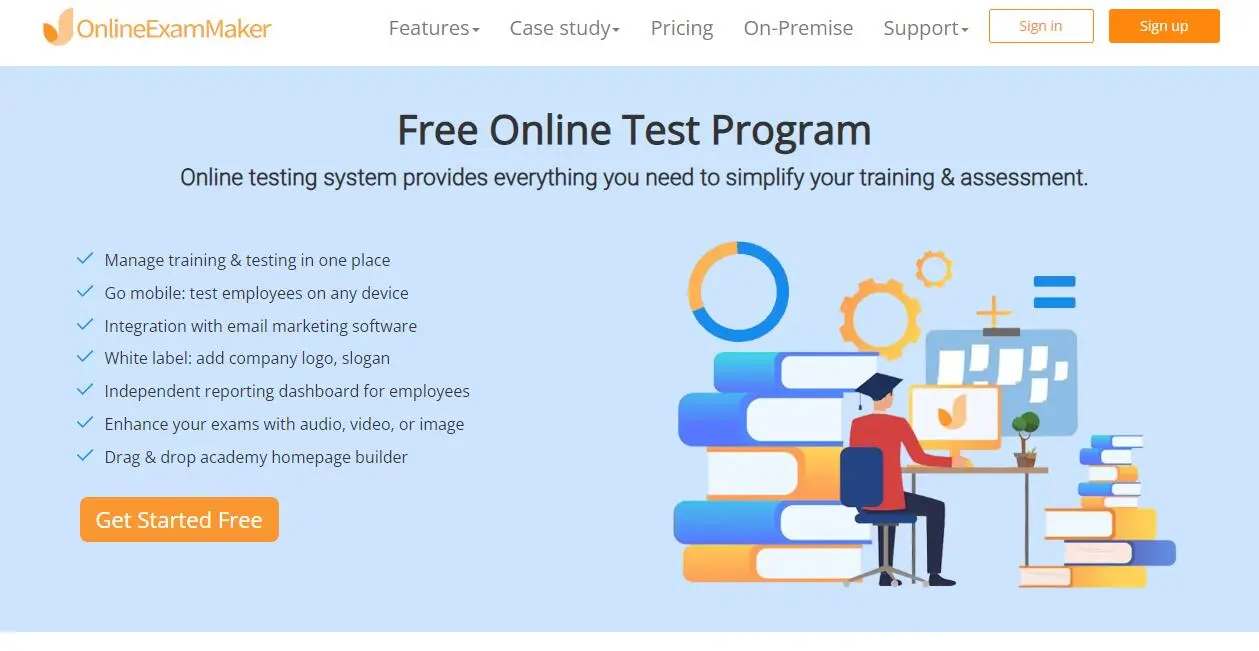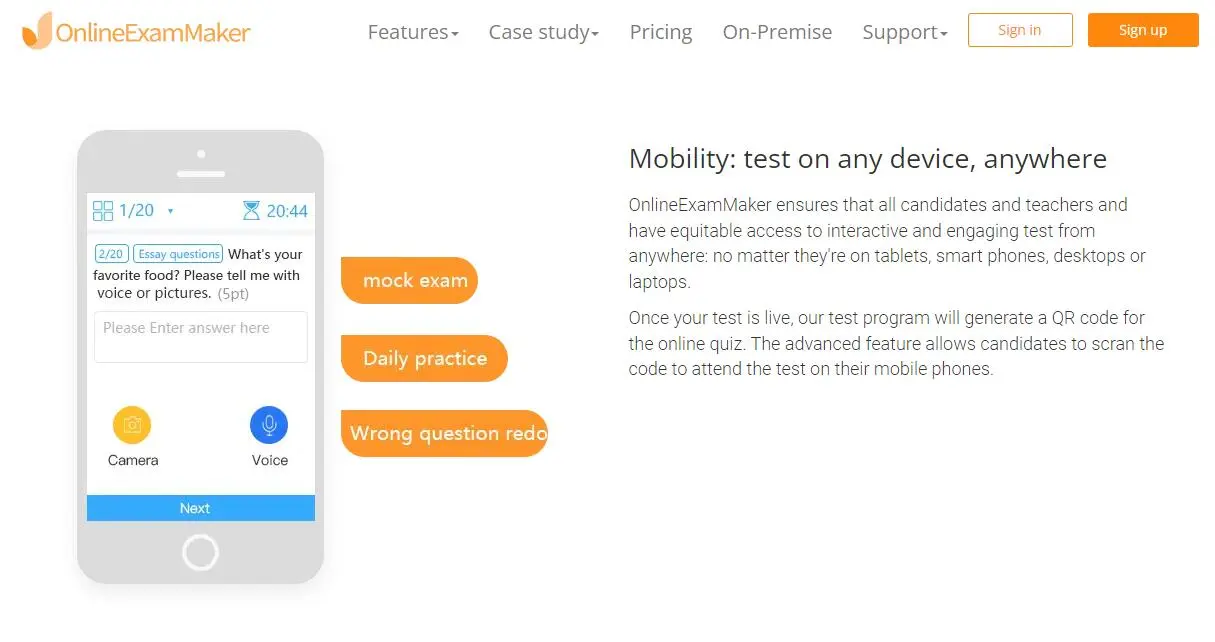Creating high-quality assessments is a critical skill for teachers, trainers, and instructional designers alike. Well-constructed tests evaluate learner comprehension, identify knowledge gaps, and indicate how to improve academic programs. Developing effective test questions that are valid, reliable, and discriminate between high and low performers is both an art and a science.
Thankfully, online test makers have emerged to simplify and streamline the process of building tests. These web-based platforms provide intuitive interfaces and powerful features for creating, distributing, and analyzing exams. This enables educators to spend less time on logistics and more time honing their test authoring abilities.
Online and paper tests are two common methods of assessing students in educational settings. Each approach has its own set of advantages and disadvantages, and the choice between them depends on various factors. In this comparison, we’ll explore the differences between online tests and paper tests from a teacher’s perspective.
Pro Tip
Want to assess your learners online? Create an online quiz for free!
Comparison of online tests vs paper tests for teachers
1. Accessibility and Convenience
Online Tests:
Advantages: Online tests offer convenience for both teachers and students. Teachers can create, distribute, and grade tests digitally, reducing paperwork and saving time. Students can take online tests from anywhere with an internet connection, making it flexible and accessible.
Disadvantages: Technical issues, such as internet connectivity problems or glitches with the online testing platform, can create challenges for both teachers and students. Ensuring fairness and preventing cheating can also be more complex in an online environment.
Paper Tests:
Advantages: Paper tests are straightforward and do not require internet access. They can be administered in any classroom with minimal technical requirements. Many students are familiar with the format and find it less intimidating.
Disadvantages: Handling physical papers, grading by hand, and dealing with paper-based logistics can be time-consuming for teachers. It also limits flexibility in terms of where and when students can take the test.
2. Grading and Feedback
Online Tests:
Advantages: Online tests can be automatically graded, saving teachers significant time. Results can be available instantly, and feedback can be provided digitally. Some online testing platforms offer detailed analytics.
Disadvantages: While the grading process is more efficient, teachers may miss the opportunity to assess handwritten responses and provide qualitative feedback.
Paper Tests:
Advantages: Grading paper tests can allow teachers to assess handwriting, organization, and other skills. It also provides the opportunity to write detailed comments and feedback on students’ work.
Disadvantages: Grading paper tests manually can be time-intensive and may lead to delays in providing feedback to students.
This article covers recommendations for selecting an online test maker, writing better questions, structuring tests strategically, enhancing assessments with multimedia, and analyzing performance data to iteratively improve.

Choosing the Right Online Test Maker
With so many online test makers to choose from, it’s important to select one aligned to your specific needs. Key factors to evaluate include:
• Question types supported – Multiple choice, true/false, matching, fill in the blank, coding challenges, essays, etc.
• Collaboration features – For co-authoring tests and reviewing data with colleagues.
• Analytics and gradebook – For distilling key insights from results.
• Customizable branding – Matching aesthetic with your school, university, or company.
• Integration options – Tying into your LMS or education apps via API.
• Pricing – Free, freemium, or paid subscription plans.
Some popular examples include Google Forms, ClassMarker, TestMaker, Typeform, and more. Take time to experiment with choosing the right online test maker for your requirements.

Writing Effective Test Questions
The core component of any assessment is the questions themselves. Some guidelines for crafting questions that accurately evaluate learner knowledge include:
• Avoid ambiguity and minimize misinterpretation. Strive for clarity and conciseness in wording.
• Check for potential bias or assumptions that could disadvantage some test takers.
• Vary difficulty level – include easy, moderate, and challenging questions that distinguish between levels of mastery.
• For multiple choice, design plausible distractors while having only one clear best answer.
• Keep questions focused directly on the learned objectives and content.
• Minimize clues in later questions that give away answers to earlier ones.
Quality questioning takes practice and benefits greatly from peer feedback. Analyzing performance data also provides insight into refining questions.
Structuring Tests Strategically
Carefully organizing the structure and format of a test improves the assessment experience. Best practices include:
• Grouping related questions into sections or modules. This provides logical flow.
• Start with easier questions to build learner confidence, then increase difficulty.
• Consider optimal question order – Don’t let later questions give away answers.
• Establish clear time limits based on question volume and difficulty.
• Indicate point values and question weighting to convey expectations.
Enhancing Tests with Multimedia
Online test makers allow embedding media elements like images, audio, and video clips within questions. This enhances engagement and provides context. Strategic use of multimedia can:
• Illustrate concepts visually through diagrams, charts, and photographs.
• Break up long blocks of text for better readability.
• Supply background information via short video introductions.
• Set the stage with audio mood-setting or sound effects.
• Evaluate learners’ interpretive skills through diagrams, cartoons, etc.
Formatting elements like color-coded answers, text highlighting, and more also improve clarity and appeal.
OnlineExamMaker: Best Online Test Creator Software for Educators
OnlineExamMaker is an advanced online proctoring and e-assessment platform designed to enable secure, valid and flexible digital tests. With AI-driven proctoring, plagiarism checks and advanced analytics, OnlineExamMaker provides a comprehensive solution to protect exam integrity and validity in online environments.
For students, OnlineExamMaker delivers a smooth exam experience online or in-person. Features like face ID confirmation, environmental checks, and recordings create exam conditions designed to prevent cheating attempts.
Create Your Next Quiz/Exam with OnlineExamMaker
Analyzing Results
The real value of testing lies in analyzing response patterns to gain insights. Be sure to:
• Review item analysis data to identify poor performing questions in need of improvement.
• Check for reliability and internal consistency across questions.
• Verify validity by linking results back to learning objectives.
• Monitor for potential bias if some student groups consistently underperform.
• Identify knowledge gaps to refine instructional materials.
• Determine ideal question difficulty and discriminatory power.
Conclusion
Online test makers offer an efficient means to develop the assessments critical for training and instruction. But simply digitizing tests is not enough – educators must have a strong working knowledge of sound test creation principles and practices as well. Combining test maker technology with expertise in crafting questions, structuring assessments strategically, applying multimedia effectively, and analyzing data ultimately results in impactful learning evaluations that enhance educational programs.